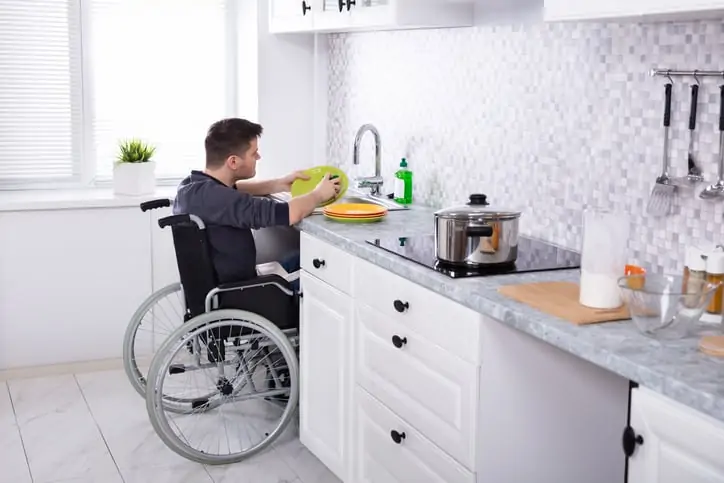
While it’s easy to think that a physical disability is something that only would happen to someone else, the truth is that disability can occur to any person at any time – whether from an accident or a condition like cancer or just the natural aging process. And many times, people find that their home requires disability modifications in order for them to return there after a hospital stay or to allow them to live there comfortably for the long term. Here’s what you need to know about home remodeling for someone with a disability.
There are as many ways to make your home handicap accessible as there are types of disabilities that need modifications. Here are some of the general things to think about when tackling home remodeling for disabled, particularly someone who’s in a wheelchair. They also come in handy should you choose to buy a new home that already features barrier-free design.
Eliminate or Modify Steps Near the Entry
Sometimes the first barrier a disabled person encounters is getting into the house at all. If you have steps to your front door, see if there’s an alternate entry that a disabled person can use, such as through the garage or back door. Otherwise, you’ll need to create a ramp or other way that a wheelchair can roll into the home.
Make Sure You Have Access to A First-Floor Bathroom and Bedroom
In today’s modern two-story houses, often most of the actual “living” areas – that is, where you sleep and use the bathroom – are upstairs. If you have someone in your home who’s disabled, you’ll need to either move to a one-story home or add in a bathroom and bedroom downstairs to eliminate the need for stairs.
Create Wider Doorways and Hallways
Expanding your doorways and hallways may be necessary to make your home wheelchair accessible; ideally doorways should be at least 36 inches wide. While you’re at it, check your flooring to ensure that it is smooth to allow for easier traversing; replace carpet with linoleum, wood or tile. Remove throw rugs or hall liners so they don’t “grab” wheelchairs or walkers. Removing rugs is a smart solution anyway as they can be dangerous, contributing to slips and falls for someone with limited mobility.
Retrofit the Bathroom
The bathroom can be the most challenging room of the house to make handicap accessible, but it is possible. First, install grab bars near the toilet area to ease the person transferring from the wheelchair to the toilet. Then add a roll-in shower – or one that otherwise has a low lip which doesn’t require a huge step to enter – along with another set of graspable handles.
Ensure Adequate Lighting
Low lighting can create a hazard for anyone in a home, but particularly someone who is disabled. Make sure that you have strong overhead lights that they can turn on with just the flip of a switch – or even better, with voice-activated commands.
Take into Account All the Obstacles
As you move about the house, anticipate what areas might be challenging for a wheelchair to maneuver, whether it’s a coffee table that blocks a path or a cupboard that’s too high to be easily reached. Determine what things are OK to leave as-is with some changes – perhaps you only move some of the kitchen items to lower, more accessible shelves – and which need to be addressed with retrofits or other modifications.
While retrofitting your home to be barrier-free can be a challenge, it’s hard to put a price on the independence and sense of well-being you will gain from staying in place. Finding out everything you can and exploring all options related to modifying your home for disabilities ensures you will be able to seek and reap the benefits of any available funding.






